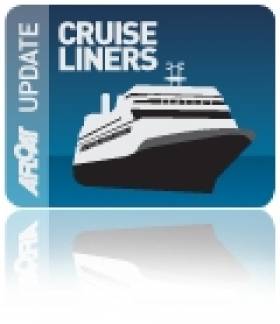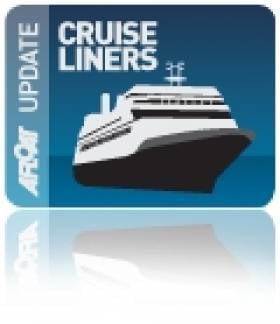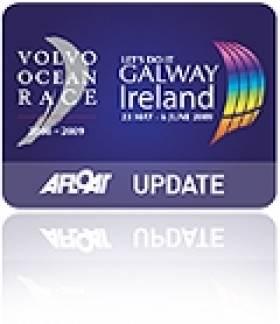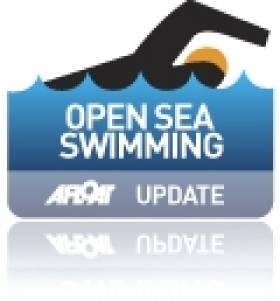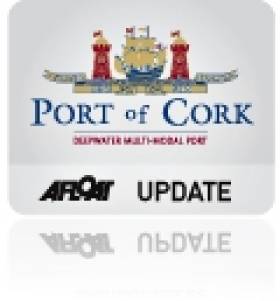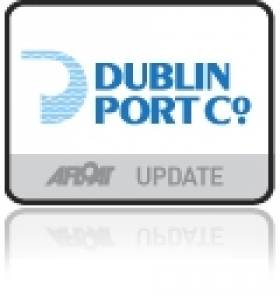Displaying items by tag: Port
Shannon Port Facility Expected to Fetch €700,000
The Irish Times reports that Shannon Foynes Port Company is set to sell off extensive warehousing along with a development site facing the port.
Five separate warehouses extending to 5,297sqm are included in the sale, along with almost 1 hectare (2.44 acres) of development land.
DTZ Sherry FitzGerald is handling the sale by public tender on 28 September. The warehousing and site are likely to make more than €700,000 for the port company.
Ferry Stops, 'Sea Water Baths' on the Way for Dun Laoghaire
The last Stena line ferry sailing from Dun Laoghaire featured on the RTE News headlines last night. The ferry link is stopping because of a decline in passenger numbers and the high cost of fuel, say the operators, Stena.
The report by John Kilraine, interviewed Harbour Boss Gerry Dunne who spoke about the master plan for the harbour, how the harbour company hoped that Stena could rebuild the route, the bid to attract cruise ships and the east coast port's future as a marine leisure centre.
The masterplan is to go through the planning processs piece by piece and harbour yacht clubs have concerns over aspects of the plan.
Last night's bulletin also reported the harbour company intends to open a 'sea water baths' in the harbour next year and a diaspora centre in 2013. The RTE report is here.
See also:
MV Queen Elizabeth Makes Maiden Call to the Port of Cork
The luxurious ocean liner, MV Queen Elizabeth will make her maiden call to Cobh tomorrow morning arriving at 9am and bringing with her over 3,000 passengers and crew. With a gross tonnage of 90,900 GRT and a guest capacity of 2,068 and 996 crew, MV Queen Elizabeth is the newest Cunarder to join the fleet.
To coincide with her maiden call, the Port of Cork together with Cunard will hold a Lusitania Memorial Service in the centre of Cobh town. Led by Captain Christopher Wells, this service will be attended by the Chairman of the Port of Cork, Port of Cork Directors, Mayor of the Town of Cobh, the County Mayor and the Lord Mayor. A number of other key figures have also been invited.
Cunard have a great history of calling to the Port of Cork and over the years all of Cunard’s liners have made a visit to Cobh. This year is the first year to welcome all three queens; Queen Mary II, Queen Victoria and Queen Elizabeth to Cobh. In 2009, MV Queen Elizabeth II made her final call to Cobh before departing for Dubai where she was to become a floating hotel.
The following will be read at the Lusitania Memorial Service, by Captain Michael McCarthy Port of Cork;
The sinking of the Lusitania on 7th May 1915 was a human catastrophe on a scale that this small town had not experienced before or since.
When the Lusitania left New York there were 1,962 people on board, 694 crew,1,265 passengers and 3 stowaways. Only 764 people survived – 474 passengers and 290 crew. Over 800 of the victim’s bodies were never found. The bodies landed in Cobh were buried in 3 mass graves in the “Old Church Cemetary”.
The People in Queenstown, Cobh, witnessed the trauma, tragedy and heartbreak that ensued. The dead, the injured and the bereaved were brought among a community here that mobilised itself and responded with courage and compassion to their needs. One of the survivors, Charles Lauriat, later referred in his book “The Lusitania’s Last Voyage” to the streets filled with people ready to do anything in their power to relieve our sufferings. He said he had never seen anything more spontaneous or genuine or more freely given than the Irish hospitality of Queenstown.
This memorial reflects the eternal connection between Cobh, the” Lusitania” and Cunard, and is a stark reminder of the tragedy of war.
It is fitting that today Captain Christopher Wells of Cunard’s vessel “Queen Elizabeth” should be here together with the Mayor and people of Cobh to reflect on the great loss and the human tragedy of the “Lusitania”.
Queen Elizabeth: 73 years ago, Cunard’s first “Queen Elizabeth” entered service. The launching of that ship was described as “the inception of a great human enterprise, an act of faith”. Could they have imagined the design and capability of the current vessel berthed at the Cobh Cruise Berth?
In October 2008, Cunard announced the building of this magnificent vessel at an estimated cost of €500 million euros, and within 2 years the naming ceremony was carried out in Southampton by Her Majesty Queen Elizabeth 11,. The vessel departed on her Maiden voyage under the command of Captain Chris Wells on the 12th October 2010 .She has already completed a World voyage, transited the Suez and Panama Canals and crossed the World’s Oceans.
Captain Wells has already served a long and distinguished career in the Merchant Navy and following many years in command, was in 2008 appointed Master of the Queen Mary 2, the same year the QE2 was retired from the Cunard Fleet. He was subsequently appointed the first Master of the Queen Elizabeth in 2009
Queen Elizabeth Arrives on Dublin Bay
Port of Cork to Mark Maiden Arrival of MV Queen Elizabeth
On Saturday 10th September 2011, MV Queen Elizabeth will make her maiden call to Cobh in the Port of Cork. To coincide with this visit the Port of Cork will formally present a plaque to the Captain of the Queen Elizabeth on the quayside at 10.30am.
This will be followed by a Lusitania Memorial Service led by the Captain and Chairman of the Port of Cork at the memorial in Cobh Town.
Saturday 10th September 2011
0900hrs - MV Queen Elizabeth arrives in Cobh
1045hrs – Plaque exchange with Port of Cork and Cunard
1115hrs – Lusitania Memorial Service Begins in the centre of Cobh Town
1145hrs – Memorial Service Ends
1145hrs – 1245hrs – Band 1 Southern Brigade will play in the promenade in Cobh
Rosanna Davison Goes Back to Her Roots Sailing with Team Sanya
Skipper and past race winner Mike Sanderson and his crew - including Galway's Frankie Leonard - will receive a special send-off from Rosanna who won her Miss World title in the Chinese city of Sanya in 2003.
Team Sanya is the Chinese entry in the 2011-12 Volvo Ocean Race, a 40,000-mile round the world race that will finish in Galway on the 3rd July 2012. A special relationship developed between Ireland and China during the last race through the Green Dragon entry, say backers Discover Ireland, the tourism body.
Rosanna will board the yacht at 11.00am at the Royal Irish Yacht Club and will sail with the team into Dublin Port. The Eastlink bridge will lift at 1.00pm, and Team Sanya will dock beside the Cill Airne at 2.00pm. Rosanna will be on the Cill Airne from 5.30-7.00
As part of the team's promotion and it's Irish link through the Discover Ireland.com brand, the race boat and crew will call into Dun Laoghaire on Sunday, 4th September, at 5pm as previously reported on Afloat.ie.
They will overnight in Dublin and sail up the Liffey on Monday at 1pm and dock beside the MV Cill Airne on North Wall Quay, Dublin 1. A reception will be held on the MV Cill Airne from 5-7pm.
At 7pm the Team will head back out into the open sea as they start their journey to Alicante for the race start on the 5th November.
The Volvo Ocean Race is regarded as sailing's premier global race and one of the most demanding team sports in the world. The 2011-2012 Volvo Ocean Race route is: departing on 5th November from Alicante to Cape Town (South Africa) Abu Dhabi (UAE) Sanya (China) Auckland (New Zealand) Itajai (Brazil) Miami (USA) Lisbon (Portugal) Lorient (Framce) and finally Galway on the 3rd July 2012.
Mike Sanderson, skipper and CEO of Team Sanya commented on the forthcoming trip: "Our relationship with Ireland is really important to us. Frankie Leonard from Galway is our media crew member and he is going to be paramount in telling our story as we race around the world, building the profile of Ireland as the stunning tourist destination that it is. For many of our team, it is our first time visiting Ireland so we were really happy to include a pitstop in Dublin during one of our training trips."
Frankie Leonard, Team Sanya race team and the Irish Media Crew Member, added: "As the only Irishman on board I'm very proud to be part of this exciting event with Team Sanya and really looking forward to sailing into Dublin next week. My home town is Galway and finishing there in July 2012 is going to be a very special moment but this stop-over is a perfect way to help build a strong following and fan base in Ireland to develop Ireland's profile as we travel to nine other ports around the world."
Dublin's Lord Mayor to Start 91st Liffey Swim
The Swim is open to competitors of all ages, abilities and nationalities, with teenagers pitting their strengths against 70 year olds and club swimmers from all over the country competing against eachother.
There is something for people of all ages to enjoy at the event, with entertainment at the finishline being provided by the Coastguard performing a simulated air-sea rescue, while Dublin Port tug boats, Shackleton and Beaufort, will fire water cannon into the air, accompanied by a colourful Dragon Boat display.
The Lord Mayor says, "the Liffey Swim is unique to Dublin. No European cities run an open swim right through their city centre. I look forward to starting the race and would like to thank Swim Ireland, Leinster Region Open Sea Committee, who do such a great job year after year. Most of all, I would like to thank the swimmers who have trained so hard for this race."
"I encourage everyone in Dublin on Saturday afternoon to follow the gruelling race along the quays and cheer on the swimmers, from the many great vantage points along the Liffey walls, bridges and boardwalks", the Lord Mayor continued."
David Farrell, Leinster Open Sea Committee commented, "We're delighted to be extending this year's race to a 2.4km event, so that it will now be finishing in the Dublin Docklands. We'd also like to gratefully acknowledge the support of Dublin City Council and Dublin Port. This year's race includes a number of Irish swimmers who have completed the gruelling English Channel swim: Julie-Ann Galloway, Lisa Howley, Ann McAdam and Eoin Gaffney."
"With it all to do are the "scratch" swimmers, Colleen Mallon and Julie-Ann Galloway in the women's race, and Shane Drumm, Daire O'Driscoll and Seamus Stacey in the men's race. They are seeded fastest and will have to pass all the swimmers who start before them if they are to win the race. They will wear a unique red hat so they can be spotted as they progress through the field", says Farrell.
Port of Cork To Take Part in Heritage Day
This year the 'Port In Pictures', a photograph exhibition of the port over the years; will also be on display in the main reception area of Custom House.
Organised by Cork City Council, Cork Heritage Open Day celebrates Ireland's architecture and heritage by enabling free access to properties & events of interest to the public that are either not usually open to the public, or would normally charge an entrance fee. Details of this year's events and participating buildings appear on the website www.corkheritageopenday.ie
Varadkar Welcomes Payment of First-Ever Port of Cork Dividend
Speaking on the matter, Minister Varadkar said "I warmly welcome this contribution by the Port of Cork. I recently wrote to the commercial agencies under my Department's remit advising them that, unless there is a compelling reason otherwise, they should be making a return to the Exchequer. In line with the McCarthy Report, this return should be 30% of after-tax profits. Therefore, I am very pleased that the Port of Cork has responded so positively, so quickly."
Minister Varadkar continued "The Port of Cork becomes only the second of the nine Ports under my Department's remit to pay a dividend. I will be expecting all profitable semi-states to pay a dividend for their activities in 2011. The only exceptions should be those companies dealing with massive debts or other liabilities."
Mr. Dermot O'Mahoney, Chairperson of the Port of Cork said "The Board of Directors of the Port of Cork Company have made a dividend payment to the Exchequer of €634,315, 30% of the company's 2010 Profit after taxation. The Board recommended this dividend in support of the Minister for Transport, Tourism and Sport's view that "the regular payment of a reasonable dividend to the shareholder is good practice and a performance regulator" for State assets particularly given the current financial position the State finds itself. The Port of Cork Company will endeavour to continue to make a profit after tax and continue to pay a dividend in the amount of 30% of profits available for distribution. The Company will also continue to pursue its capital strategic development plan and reduction in its pension fund deficit.""
Varadkar to Open Dublin Port Conference
Dr. Leo Varadkar, T.D., Minister for Transport, Tourism and Sport will open a major conference on the future development of Dublin Port at 9 am tomorrow at The Gibson Hotel, Dublin (beside the Point Village). Among the issues to be addressed at the conference will include: economic; infrastructure; planning; transport; tourism; and environmental considerations.
Speakers and panellists on the day will include: Danny McCoy, Director General, IBEC; Jim Power, Economist; Dr. Don Thornhill, Chairman, National Competitiveness Council; Gina Quin, CEO, Dublin Chamber; Michael Stubbs; Dublin City Assistant Manager; John Whelan, CEO, Irish Exporters Association; Eamonn McKeon, CEO, Irish Tourism Industry Confederation; Peter Nash, Tourism Ireland; Nigel O'Neill, Head of Strategic Planning, NRA; Stephen Ahearne, General Manager – Freight, Irish Rail; Tom Wilson of the Freight Transport Association; Marian Wilson; Head of Transport Planning, National Transport Authority; Patrick Verhoeven, Secretary General, European Sea Ports Organisation; Brendan McDonough, Manager of Strategic Planning and EU, IDA Ireland; Eamonn O'Reilly, CEO, Dublin Port Company; and Lucy McCaffrey, Chairperson, Dublin Port Company.
The conference is part of Dublin Port Company's consultation on the future development of Dublin Port, which will need to handle 60 million tonnes - double today's throughput – by 2040. The key question to be addressed is how Dublin Port Company can achieve this taking into consideration the Port's role and responsibilities across trade, tourism, transport and the natural and built environments.
Dublin Port Company is seeking submissions on the development of a Masterplan by 31st May, 2011.




























